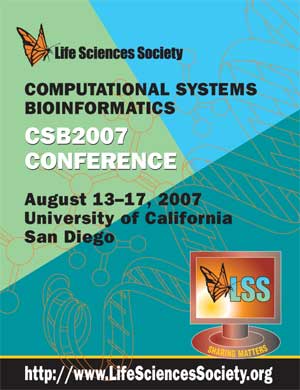Deconvoluting the BAC-Gene Relationships Using a Physical Map
Yonghui Wu, Lan Liu, Timothy J. Close, Stefano Lonardi*
Department of Computer Science and Engineering, University of California, Riverside, CA 92521, USA. stelo@cs.ucr.edu
Proc LSS Comput Syst Bioinform Conf. August, 2007. Vol. 6, p. 203-214. Full-Text PDF
*To whom correspondence should be addressed.

Motivation: The deconvolution of the relationships between BAC clones and genes is a crucial step in the selective sequencing of the regions of interest in a genome. It usually requires combinatorial pooling of unique probes obtained from the genes (unigenes), and the screening of the BAC library using the pools in a hybridization experiment. Since several probes can hybridize to the same BAC, in order for the deconvolution to be achievable the pooling design has to be able to handle a large number of positives. As a consequence, smaller pools need to be designed which in turn increases the number of hybridization experiments possibly making the entire protocol unfeasible. Results: We propose a new algorithm that is capable of producing high accuracy deconvolution even in the presence of a weak pooling design, i.e., when pools are rather large. The algorithm compensates for the decrease of information in the hybridization data by taking advantage of a physical map of the BAC clones. We show that the right combination of combinatorial pooling and our algorithm not only dramatically reduces the number of pools required, but also successfully deconvolutes the BAC-gene relationships with almost perfect accuracy. Availability: Software available on request from the first author.
[CSB2007 Conference Home Page]....[CSB2007 Online Proceedings]....[Life Sciences Society Home Page]